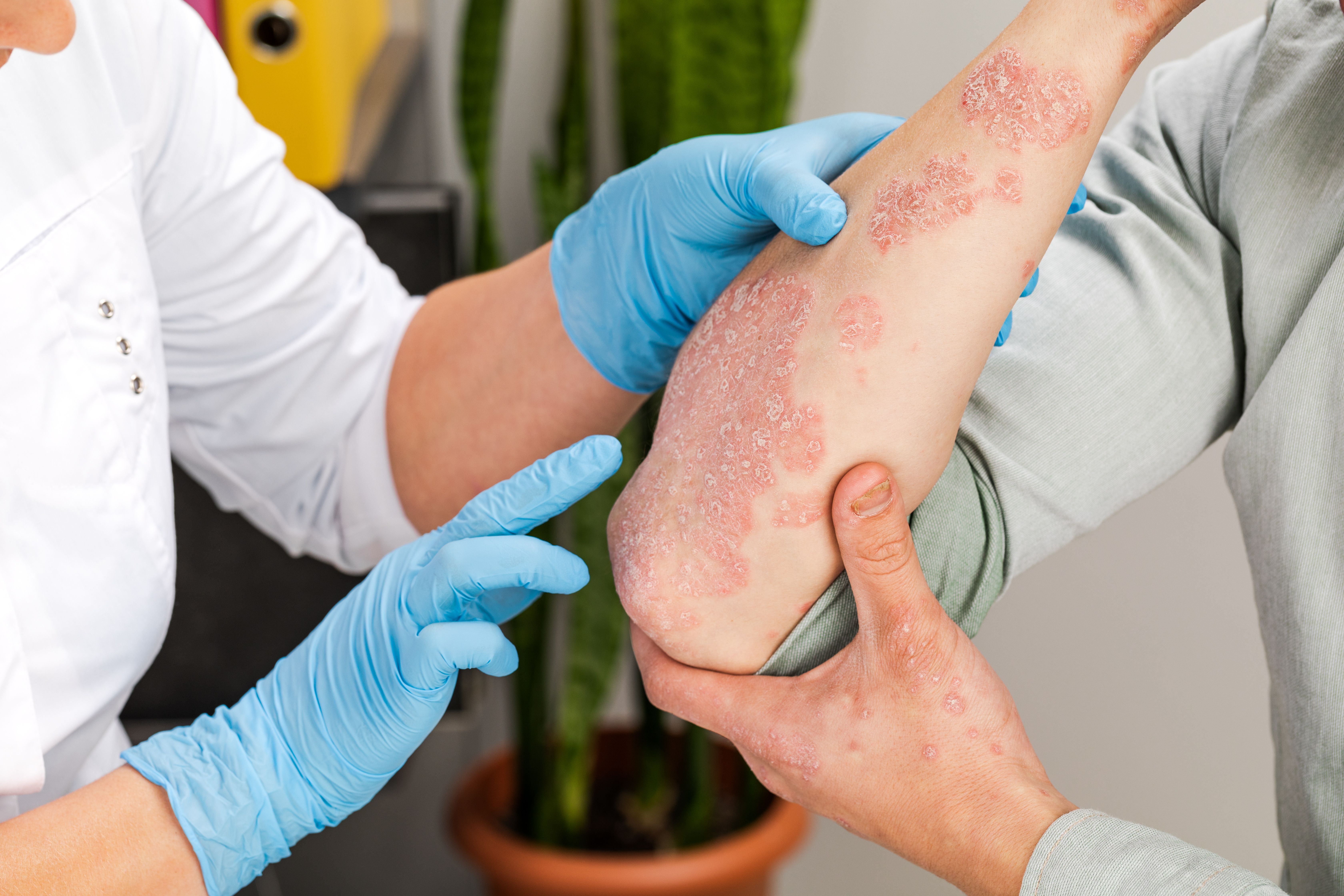- Center on Health Equity & Access
- Clinical
- Health Care Cost
- Health Care Delivery
- Insurance
- Policy
- Technology
- Value-Based Care
The Burden of AD Flares and Impact of Ruxolitinib Initiation on Utilization of Other Therapies
Posters at AMCP Nexus analyzed the burden of flares on patients with atopic dermatitis (AD) and the impact initiating ruxolitinib cream had on use of other therapies.
Patients with atopic dermatitis flares experience worsening signs and symptoms of the disease and require intensification of treatment.
Image credit: fusssergei - stock.adobe.com

Patients with moderate to severe atopic dermatitis (AD) experience flares of their condition with topical corticosteroids often being a first-line treatment for flares.1 New research published at AMCP Nexus, held October 14-17 in Las Vegas, Nevada, evaluated the burden on patients experiencing flares and highlighted the need for treatment to prevent flares. Another poster evaluated ruxolitinib cream, showing how using it created a reduction in claims for other therapies to treat atopic dermatitis.
The Burden of Flares
In the first poster, the authors summarized the clinical, humanistic, and economic burden of flares for adults with moderate to severe atopic dermatitis using a targeted literature review.2
“Patients with AD experience flares associated with worsening signs and symptoms, often requiring intensification of treatment,” they explained.
The review included 26 studies, although the definition of flares differed across them. From the studies, anywhere from 36.4% to 58.4% of patients experienced flares, with the average number over the past year ranging from 2.1 to 11.3. The duration of flares ranged from 1 day to at least 2 months.
Patients treated with systemic therapy did have a reduction of flare, although this therapy didn’t completely stop flares from occurring. For patients currently experiencing flares, the mean scores on the Patient-Oriented Eczema Measure, Dermatology Life Quality Index, peak pruritis numeric rating scale, and Work Productivity and Activity Impairment scale were worse compared with patients not currently flaring.
The median out-of-pocket cost increased for patients as number of flare days increased and patients with flares utilized more health care resources than those without.
The authors concluded that there remains a need for treatments that prevent or reduce flares for patients.
Ruxolitinib Initiation Reduces Other Treatments
The second poster analyzed administrative claims data from the Optum Research Database and included 383 pages 12 years and older who had been treated with ruxolitinib cream for atopic dermatitis between November 1, 2021, and September 30, 2022.3
Patients had a mean (SD) age of 50.1 (21.4) years, with 61.1% female and 53.3% White. The majority (61.9%) were on commercial plans, with 38.1% on Medicare Advantage.
Patients included had at least 1 claim for ruxolitinib cream with follow-up periods of 6 months before and after the first claim (index date). In the 6 months after the index date, the mean number of fills was 1.8 (1.3; range, 1-8).
The researchers found a reduction of other topical and systemic therapies after patients started on ruxolitinib:
- Topical corticosteroids decreased from 54.1% to 33.2%
- Topical calcineurin inhibitors decreased from 15.1% to 6.0%
- Topical phosphodiesterase-4 inhibitors decreased from 6.8% to 2.6%
- Systemic corticosteroids decreased from 25.3% to 15.1%
- The mean cumulative prednisone-equivalent dose for systemic corticosteroids decreased by 25%
During the baseline period, 319 patients were not on biologics and nearly all (93.1%) avoided starting biologic treatment in the 6-month follow-up period. Of the 64 patients who had been on biologic treatment during baseline, 15.6% did not continue biologic therapy during the follow-up.
“This analysis confirms previous findings from the Healthcare Integrated Research Database that short-term treatment with ruxolitinib cream may reduce the use of other topical therapies and corticosteroids and has the potential to prevent or decrease use of biologics in patients with [atopic dermatitis],” the authors concluded.
References
1. Frazier W, Bhardwaj N. Atopic dermatitis: diagnosis and treatment. Am Fam Physician. 2020;101(10):590-598.
2. Gray C, Joseph J, Cholasamudram S. Understanding the burden of flares in patients with moderate to severe atopic dermatitis: a targeted literature review. Presented at: AMCP Nexus; October 14-17, 2024; Las Vegas, Nevada. Poster L16.
3. Liu J, Bui B, Odo N, Bancroft T, Sturm D. Ruxolitinib cream utilization reduced other topical therapy, corticosteroid, and biologic use in patients with atopic dermatitis: US claims database analysis. Presented at: AMCP Nexus; October 14-17, 2024; Las Vegas, Nevada. Poster L12.
